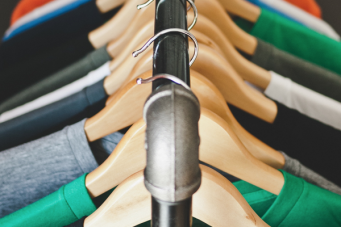![]() 5 minute read
5 minute read
How to define the trends which will settle down for long-term development and should be utilized in company’s strategy? It is the ones which trigger new consumer behavior. The issue of ocean pollution is being used as a message for several companies. We see the weak signals from consumers and trend adoption by leading enterprises in their strategy. The trend which triggers new consumer values is determined to live long. Environmental issues come on the frontline in the production cycle and appearance of the products. Let’s explore the presentation of ocean issues in marketing and how new consumer behavior is born.
Oceania
on your feet
Experts estimate that there are more than 5.25 trillion pieces of plastic trash in the ocean. The consequences of the plastic waste dumped into the water are terrifying. To some estimates, about 200 areas have become ‘dead zones’ where no life organisms can now grow. There are multiple ways how to address this issue. Claimed as “One of the best inventions of 2015” by TIME Magazine, Ocean CleanUp – the most efficient and revolutionizing way to collect plastic from the ocean, was invented by 17-years-old Boyan Slat. This technology will allow collecting a tremendous amount of plastic from the ocean. Collected waste will be recycled and sold to B2B and B2C companies as a production material. Circle economy as it is – wasteless.
Adidas was one of the first to catch the trend in the apparel industry, producing eco-friendly fabric from the ocean waste. In 2016, Adidas launched the first mass production footwear using Parley Ocean Plastic. The UltraBOOST Uncaged Parley is a running shoe is made from a mix of the ocean plastic and recycled polyester. The design of the shoe was also inspired by waves, which completes the oceanic image of the product. The comfortable and stylish sneakers also have an additional value of being produced in an ecological and environmentally friendly way.“At this point, it’s no longer just about raising awareness. It’s about taking action and implementing strategies that can end the cycle of plastic pollution for good. Eco-innovation is an open playing field,” Parley for the Oceans Founder Cyrill Gutsch said.
Shame
for eco-careless behavior
Some companies choose different ways to address the harmful usage of plastic. Israeli drinks company SodaStream recently placed a humoristic ad, where the main character is being publicly shamed for using the plastic bottles. They raise the question “Why carry shameful polluting plastic bottles and hurt mother earth?” The advertisement is tied up with SodaStream’s “Shame or Glory” campaign that challenges consumer to choose ecological and environmentally friendly path:
“You can walk the path of shame – Carrying heavy plastic bottles from the supermarket like a caveman and polluting the oceans, killing adorable baby dolphins with every filthy plastic bottle thrown away. OR Path of Glory – start using the economical, fresh and environmentally SodaStream machine to make delicious sparkling water at home with a touch of a button.”
In four days the ad has attracted almost 2 million views. The reaction to the reel differs a lot. Some say that the ad is “weird and bad” when others claim that it is one of the most influential pieces they have seen in 2016. The company used the reference to the used one of the characters and scene of popular tv-series “Game of Thrones”. Will the public shaming work for more ecological buying behavior? The time will show. However, it is one of the ways to address the issue and promote the sustainable values of the brand.
Desire to
impact the nature
It is a fact that due to lack of time and feeling of own influence on the global environment, consumers are not always capable of performing direct impact on solving environmental issues. It stays true even when person cares about the sustainable and ecological development of the world. People are excited about new technologies surrounding themselves with new gadgets at home, work, on a commute. Simultaneously, there is a thirst to dilute high tech with natural objects or at least with some pieces reflect the nature.
“The end user wants to know where did it come from, how is it made, how engaged is it in the culture of making and building, what is it doing to me now, how is it working for me, and ultimately where is it going to when I am done with it, how are we then recycling or upcycling this?” underlines Jody Turner, market insight strategist, design and global trend expert. This is when new ecological buying habits are born.




